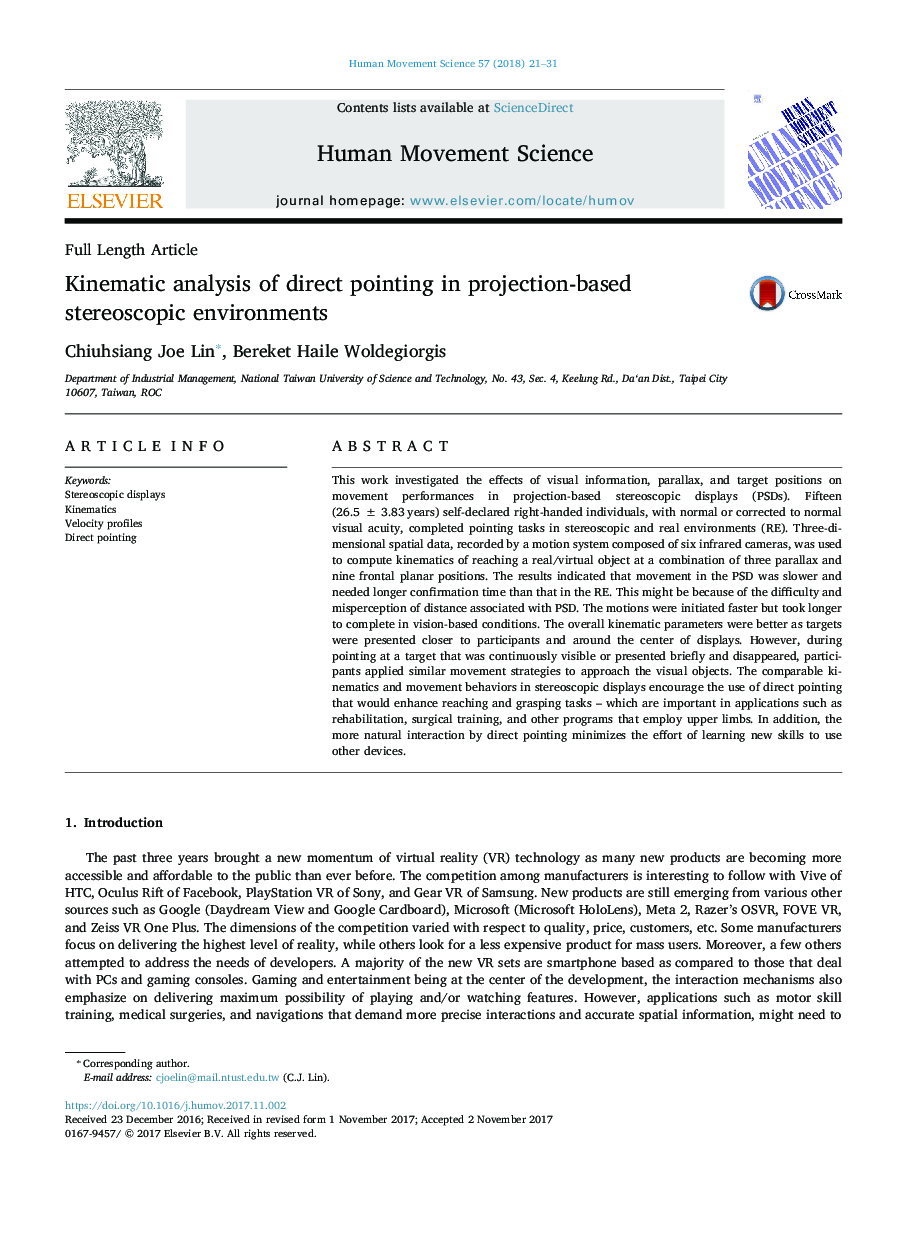| Article ID | Journal | Published Year | Pages | File Type |
|---|---|---|---|---|
| 7290930 | Human Movement Science | 2018 | 11 Pages |
Abstract
This work investigated the effects of visual information, parallax, and target positions on movement performances in projection-based stereoscopic displays (PSDs). Fifteen (26.5â¯Â±â¯3.83â¯years) self-declared right-handed individuals, with normal or corrected to normal visual acuity, completed pointing tasks in stereoscopic and real environments (RE). Three-dimensional spatial data, recorded by a motion system composed of six infrared cameras, was used to compute kinematics of reaching a real/virtual object at a combination of three parallax and nine frontal planar positions. The results indicated that movement in the PSD was slower and needed longer confirmation time than that in the RE. This might be because of the difficulty and misperception of distance associated with PSD. The motions were initiated faster but took longer to complete in vision-based conditions. The overall kinematic parameters were better as targets were presented closer to participants and around the center of displays. However, during pointing at a target that was continuously visible or presented briefly and disappeared, participants applied similar movement strategies to approach the visual objects. The comparable kinematics and movement behaviors in stereoscopic displays encourage the use of direct pointing that would enhance reaching and grasping tasks - which are important in applications such as rehabilitation, surgical training, and other programs that employ upper limbs. In addition, the more natural interaction by direct pointing minimizes the effort of learning new skills to use other devices.
Related Topics
Life Sciences
Neuroscience
Cognitive Neuroscience
Authors
Chiuhsiang Joe Lin, Bereket Haile Woldegiorgis,
